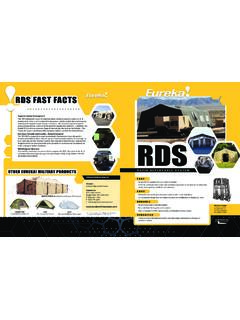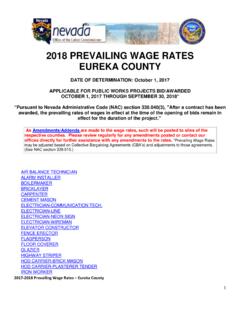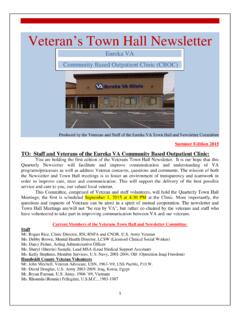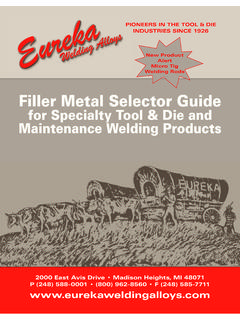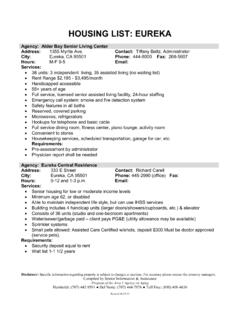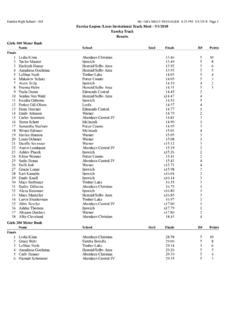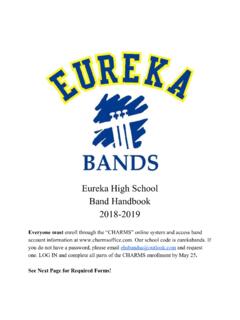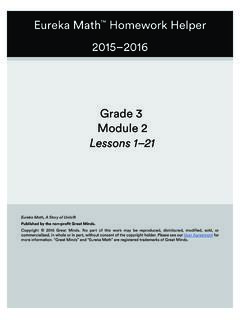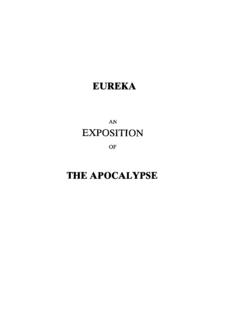Transcription of Eureka County Nuclear Waste Program P.O. Box 714 Eureka ...
1 Eureka County Nuclear Waste Program Box 714. Eureka , NV 89316. 775/237-5372. January 2, 2013 Cindy Bladey, Chief Rules, Announcements, and Directive Branch Office of Administration Mail Stop: TWB 05 B01M Nuclear Regulatory Commission Washington, DC 20555 001 RE: Scoping Comments on Proposed Draft EIS on Waste Confidence Decision Dear Ms. Bladey: Eureka County offers the following comments on the NRC proposal to prepare a Draft EIS on the Waste Confidence Decision. Eureka County is an affected unit of local government under section 116 of the Nuclear Waste Policy Act. The Notice of Intent to prepare an EIS does not provide sufficient detail for the public to clearly understand what the proposed action is and what reasonable alternatives to the proposed action the NRC will consider in the draft EIS. Therefore, it is difficult to provide comments on the scope of the EIS when it has not been clearly defined. The Draft EIS must contain analysis of the environmental effects of the proposed action and reasonable alternatives, including the No Action alternative.
2 Although the Notice does include a description of three scenarios to be analyzed, these scenarios are not equivalent to alternatives to the proposed action. We assume that the proposed action is to reissue a Waste Confidence Rule which states that the Commission has concluded that Waste can be stored safely for some indeterminate time frame. Alternatives that could be considered include delaying issuance of a new rule for some specified time frame while additional information needed to make a determination is gathered, and the No Action alternative of not licensing new reactors until the time frame for a repository is better defined. The EIS should also consider the impacts of a finding of no Waste confidence as part of the alternatives analysis. The NRC staff recently published a draft report Identification and Prioritization of the Technical Information Needs Affecting Potential Regulation of Extended Storage and Transportation of Spent Nuclear Fuel. The stated purpose of this report is to identify areas where research needs to be conducted to identify necessary information to accurately assess the risk of long 1.
3 Term storage of spent Nuclear fuel for both storage and ultimate transportation. In this report, NRC staff prioritized research needs based upon information gaps that could potentially lead to the highest consequences. The research needs that they prioritized as the highest are significant, and will require substantial research and resources to develop the technology to monitor the spent fuel in storage and then to assess the consequences. Therefore, the draft EIS should clearly explain the status of each of these research needs, and how those needs relate to the proposed action and alternatives. The timetable for this EIS is in conflict with the stated need by NRC staff for this research, which will take far longer than the EIS on its present schedule, and the EIS should address the research gaps and whether a finding of Waste confidence is possible without this information. The draft EIS should also clearly describe how the proposed action and alternatives affect other components of the Nuclear power industry.
4 These include existing and proposed power plants, independent spent fuel storage installations such as the proposed PFS facility in Utah licensed by the Commission, any centralized storage facilities as proposed by the Blue Ribbon Commission on America's Nuclear Future (BRC), and the necessary components of any future transportation system. In our experience with Nuclear Waste planning and management as an Affected Unit of Local Government, transportation issues have been ignored or postponed. It is essential that this EIS integrate the systems components of the Nuclear power industry, including its Nuclear wastes, in order to produce a useful and meaningful analysis. We must point out that the Commission must carefully consider the impact that its Waste confidence decision will have on the public's trust and confidence that the country can safely manage spent fuel. Because of the lack of progress in obtaining a solution to the Waste problem, the public is increasingly doubtful that a solution will be found.
5 Simple statements that the Commission finds reasonable assurance that safe disposal of high level radioactive Waste and spent fuel in a mined geologic repository is technically feasible and that the Commission finds reasonable assurance that sufficient mined geologic repository capacity will be available to dispose of the commercial high level radioactive Waste and spent fuel generated in any reactor when necessary will do little to reassure the public that a solution will be developed in a timely manner, and may deepen the skepticism of a concerned public about the government's capacity to handle the Waste issue. Finally, the Blue Ribbon Commission has made constructive recommendations, especially concerning the vexing management and institutional issues related to Waste management. For example, two of the BRC's eight major strategic recommendations are: 1. a new, consent . based approach to siting future Nuclear Waste management facilities; and 2. a new organization dedicated solely to implementing the Waste management Program and empowered with the authority and resources to succeed.
6 Also, please consider the BRC report at Section , page 34, it is clear that today's institutional arrangements and storage technologies were not designed for the lengthy storage timescales that now appear inevitable for at least some portion of the nation's spent fuel inventory. Section of the BRC's report references the 2. NRC's extended storage and transport regulation review, expected by 2017. We expect the NRC to integrate the BRC's findings and recommendations into the EIS analysis to produce a document of integrity that will, in fact, be a useful decision making tool in the short and long term. If the findings and recommendations of the BRC are not considered in the EIS analysis, we believe the EIS will be deficient from a NEPA perspective. Thank you for considering our comments. Please include us in future correspondence related to this EIS. Sincerely, Abigail C. Johnson Abigail Johnson Nuclear Waste Advisor Eureka County , Nevada cc: Ron Damele, Eureka County Submitted by fax: 301/492 3446 on 01/02/13 3.

